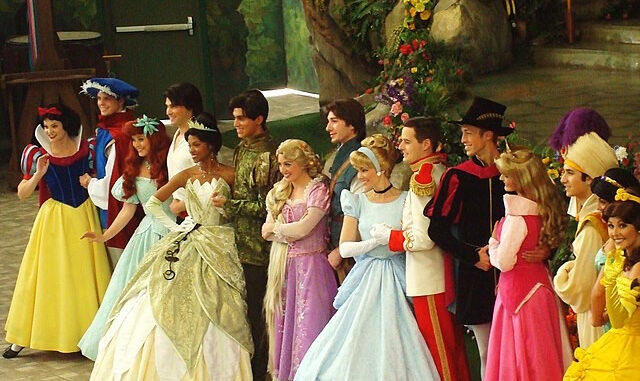
Capri Scarcelli | A&E Editor
Sept. 22, 2022
In 2019, it was announced that actress Halle Bailey would be portraying “Ariel” in the live-action edition of Disney’s “The Little Mermaid.” Set to release in 2023, older-generation Disney fans expressed outrage for the highly-anticipated movie for one illogical reason – Ariel is now a person of color.
Upon the movie trailer’s release, the reviews were met with over a million dislikes on Walt Disney Studios’ YouTube page. Critics claimed to be upset over “forced inclusion” and “not sticking to the original plot,” blatantly unaware that their non sequitur would have to be traced back to the fairytale’s origin.
Grimm’s Brothers Fairytales, or Fairytales of Hans Christen Andersen, wrote Ariel as “the prettiest of them all; her skin was as clear and delicate as a rose-leaf, and her eyes as blue as the deepest sea; but, like all the others, she had no feet, and her body ended in a fish’s tail.” What does this mean? That Ariel was either pink, like a petal, or green, like an actual leaf. No indication of ethnicity or whiteness. Aside from this point, a sea creature such as Ariel cannot be physically confined to a race, since she is inhuman.
This argument of whether a sea creature can present as a different race shows how far people will go to keep Black artists out of fiction.
The original movie was released in 1989, using Christie Brinkley as inspiration for the animated drawing of the character. Ariel was supposed to be drawn as blonde, though Disney’s animation team decided that red would be a good contrast for the green of her tail, and the rest is history. According to Insider, Disney princesses were often modeled off celebrities circulating at the time (which, in film and music, were still predominantly white).
Since various books, movies and television shows have previously-scripted white characters, it makes the acting industry increasingly difficult for women of color to find roles that specifically are written for them. In this case, Disney has the creative liberty to change the characterization of a protagonist, especially since the original fairytale did not distinguish Ariel to be of a particular race. Besides – they turned Shakespeare’s “Hamlet” into a movie about lions and meerkats, so why can’t they change the casting of a live-action to be more culturally-responsive? Because microaggressions are disguised as literary critiques, coming from audiences who hate to see change.
Supporters of “The Little Mermaid” casting noticed that the trailer seemed washed out by the low saturation, making Bailey appear more light-skinned. Though this is not an accusation of an intentional white-washing, it makes audiences think that Disney might be hesitant about their casting decision, even if they aren’t.
Disney is working toward being more inclusive in their casting, though they have failed plenty of times in the past. The first (and only) Black princess came to the big screen in “The Princess and the Frog” with Tiana (2009). For “Aladdin,” (1997) both voice actors for Jasmine and Aladdin are white, despite taking place in the Middle East (Not to mention the 2019 live-action casted an Indian actress as Jasmine, instead of casting an actress of the correct descent). For “Mulan,” (1998) the Chinese princess’ vocal singer is Filipina Lea Salonga. This is not including the long history of racial stereotypes depicted in films; such as “Peter Pan” (1953) and “Pocahontas” (1995) with harmful depictions of American Indians, “Dumbo” (1941) with inappropriate nods to Jim Crow laws and “Lady and the Tramp” with mistreatment of Asian culture (1955).
Yes, these movies are now met with content warnings as of 2020, but this does not change the fact that audiences who grew up with this racially-motivated narrative want it back. And will do anything they can to protest new perspectives and new voices.
Trending on TikTok, Black mothers are showing videos of their young daughters watching “The Little Mermaid” live-action trailer – crying tears of joy and pride. Some girls press their faces against the television in silence, while other girls shout to the heavens: “MOM! She looks like ME!” Many of us are in a position of privilege where we could say we resembled a Disney princess once, dressed up as one or related to their story. Now, Black girls can see themselves in the media, soak it in and enjoy that they can finally see themselves on screen.
I believe that every child should feel seen. Every child should be able to feel included in things that bring them joy. These movies are made for children, are watched by children, and are adored by children. If kiddos decide that this is the Ariel they want, then this is the Ariel they whole-heartedly deserve – and no one should say otherwise.
Bailey said this opportunity was “something special,” saying she is “proud to bring [her] locs to Ariel,” and “take the essence of [herself] and mix the two.”
